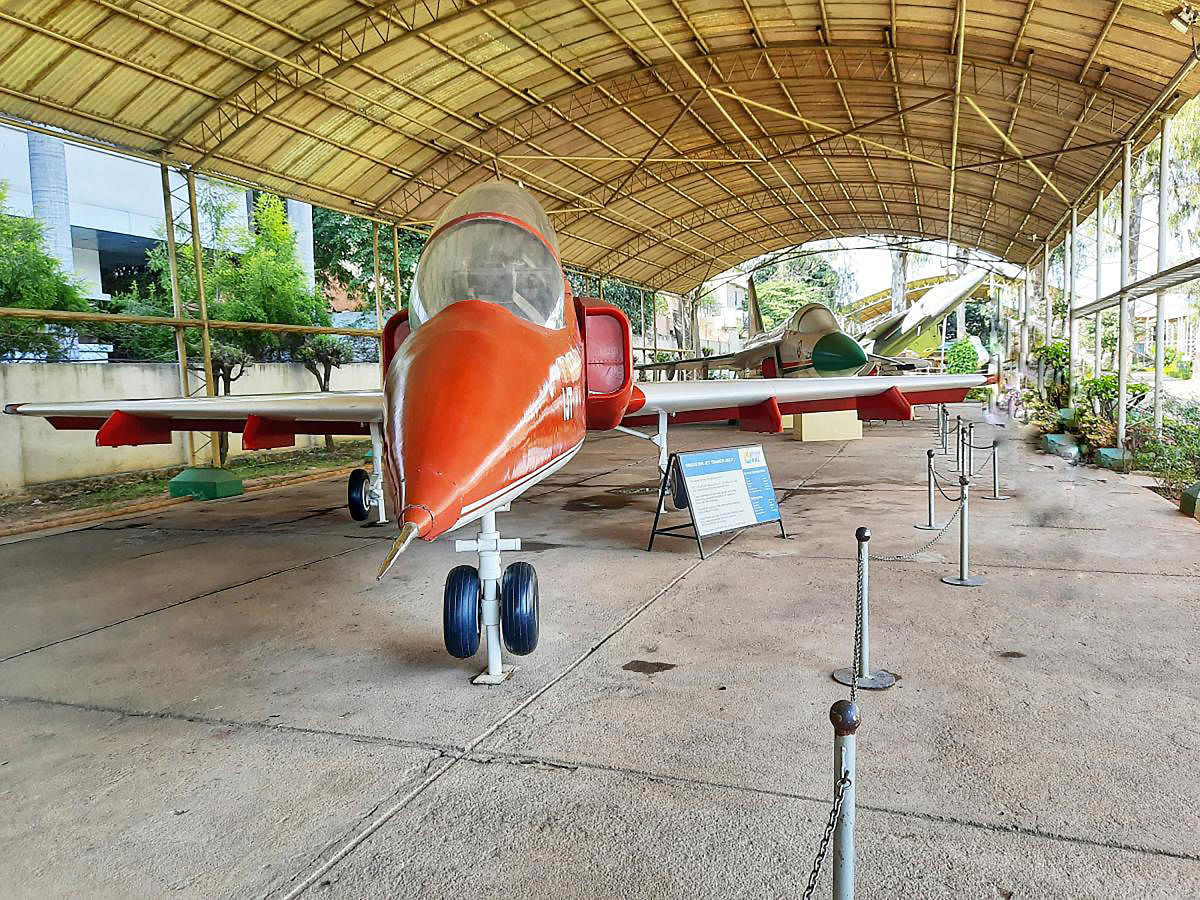

Hindustan Aeronautics Limited (HAL), India’s first aerospace establishment, was founded and is headquartered in Bengaluru. If you want to walk down the journey of how the aviation industry has evolved in India, a visit to the HAL Aerospace Museum, India’s first aviation museum located within the HAL premises, is highly recommended.
From assembling the first aircraft, Harlow PC-5, at its stables to manufacturing the most modern helicopters, planes and equipment for present-day requirements of the Indian Airforce, Navy, Railways and space research, HAL’s journey has been a long one. It’s another world as one walks between vintage planes, flight simulators, mock ATC and all things associated with this field in the museum hall.
Now, this place leads me to my next destination: the Indian Institute of Science (IISc).
That morning, I had ordered a plate of idlis at this little restaurant on the IISc campus. Just like any other day there, it was abuzz with people’s chitter-chatter. A typical scene is the best scientists of India and abroad discussing experiments over a plate of food. Irony has it that similar discussions happened under the same roof sometime in history. But back then, the discussions were about something more strategic.
In times of need
What is now the top-of-the-notch science and technology institution in India, served as a hub that aided HAL in research and training during World War II. But first, a slice of HAL’s history.
In the late 1930s, a factory meant for automobile maintenance was set up by an industrialist named Walchand Hirachand. History has it that, on his way to China, Hirachand chanced upon a meeting with William D Pawley, who was associated with the Intercontinental Aircraft Corporation of New York, an American aircraft exporter. This connection led to the procurement of necessary tools and equipment from the US to set up an aircraft-production line in India.
It was in December 1940 (with WWII underway), with funds from Mysore State, that the factory morphed into Hindustan Aircraft Private Limited (now HAL). The plan was to manufacture aircrafts like Harlow Trainer, Hawk Fighter and the Vultee attack bombers.
First, with the technical back-up from IISc, that Hindustan Aircraft Limited assembled the first aircraft in India, a Harlow PC-5, in 1941.
Still, as the war intensified massive manpower trained in aeronautics was the need, which sent HAL to seek IISc’s support. This led to the establishment of the Department of Aeronautical Engineering in IISc, in December 1942. The building was designed by German architect Otto Königsberger. He was a young Jew who had fled his country during the Nazi regime and was later employed as the government architect of the erstwhile Mysore State.
His architectural design is an amalgamation of European and traditional Indian styles.
The Aeronautical Engineering building is an oblong structure with high ceilings and narrow corridors that integrated natural climate-control.
Otto Königsberger has also designed the closed-circuit wind tunnel — the first of its kind in India.
He also designed a
hydrogen plant for the production of large-scale hydrogen that fuelled American aircrafts. A section of this plant is now an eatery, where I had ordered my idlis!
The takeover
Meanwhile, the threat posed by Imperial Japan loomed large in the ongoing World War II, because of which there was a need by the British Royal Air Force to boost its military hardware supplies in Asia.
With all likelihood, HAL was most suitable as a base for the South-East Asia Command of the allied forces for servicing their aircrafts.
Hence, all the aircraft-manufacturing plans in India were abandoned to support the repair and overhaul services of the American aircrafts, and the factory was eventually taken over by the US Army Air Forces in 1943. This led to rapid expansion in the facilities and it became the 84th air depot for overhaul and repair of American aircrafts during WWII.
Later, in 1964, the factory was nationalised and changed to Hindustan Aeronautics Limited.